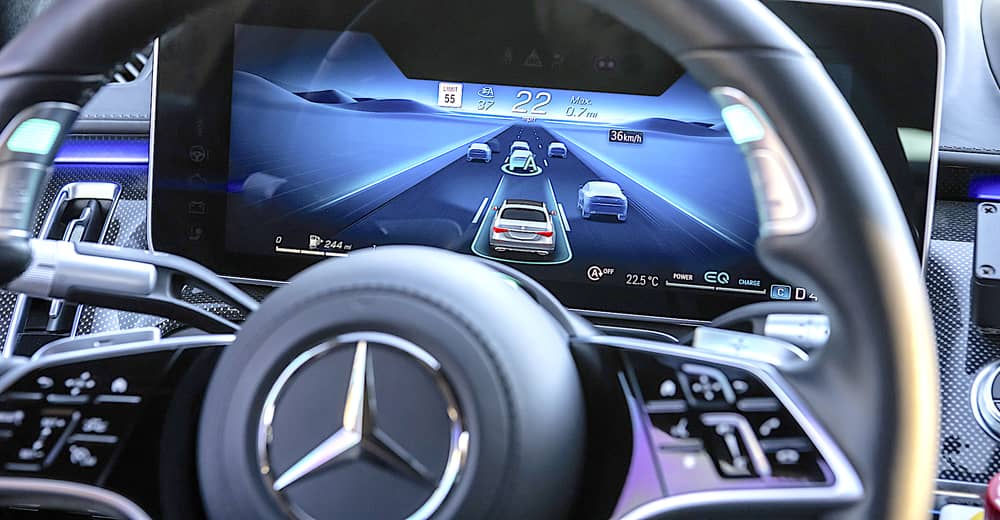One of the more advanced audio features in cars is speed-compensated loudness, which is meant to improve driving-related listening. Describe the meaning of your car’s speed-compensated volume.
This creative fix addresses wind and road noise, which can impede a driver’s ability to clearly hear their car’s audio system. In reaction to variations in the speed of the vehicle, this technology automatically modifies the audio system’s volume. Moreover, it contributes to optimal and consistent sound quality maintenance.
The speed-compensated volume system adjusts the music level to match the driver’s acceleration and deceleration. It does this automatically. That way, there’s less need for manual volume adjustments because the audio is guaranteed to stay audible. As a consequence, drivers are able to maintain their attention on the road.
This article introduces the notion of speed-compensated volume. In addition, we shall discuss its significance for safe driving.
What Is Speed Compensated Volume?

Speed-compensated volume is a technological achievement found in many modern automobile audio systems. It is an essential component in the goal of a pleasant and safe driving experience. This novel function involves the dynamic adjustment of audio volume based on the vehicle’s speed. Its primary function is to mitigate the effects of external elements that can interfere with the audibility of the in-car audio.
The logic behind speed-compensated loudness is obvious. When a car accelerates, the outside noise level increases, potentially drowning out the audio playback. As the car slows, the external noise decreases, and the audio may become unreasonably loud.
To counteract this, this system continuously analyzes the vehicle’s speed and adjusts the radio volume automatically. To compensate for increased ambient noise, the technology gradually increases the loudness as the automobile accelerates. As the vehicle decelerates, the volume is reduced to avoid pain or distractions.
Thus, speed-compensated volume is a tribute to the marriage of automotive technology and driver well-being. It allows drivers to stay focused on the road by changing the audio output in real time to the driving conditions. This not only improves convenience, but it also helps to make driving safer. As a result, it is a necessary component for the driver’s safety.
How Does Speed Compensated Volume Work?

When a car approaches a certain speed, SCV automatically modifies the audio system’s loudness. SCV usually functions as follows:
Monitoring Vehicle Speed
Vehicle speed is tracked by sensors built into the infotainment or audio system of the car. Some of these sensors are the onboard computer of the car, GPS information, or direct connections to the speedometer.
External Noise Assessment
The algorithm matches the present speed with an ongoing assessment of the noise level inside the car. It usually gets tougher to hear audio properly as a vehicle speeds up because wind and road noise intensify more.
Volume Adjustment
The SCV system automatically adjusts the audio level to compensate for fluctuations in noise based on data from the speed sensors. As the car speeds up, the system boosts the level to guarantee that the audio remains heard. As the car slows, the technology decreases the level to prevent the audio from being too loud.
Real-Time Adaptation
SCV works in real-time, constantly monitoring the vehicle’s speed and altering the volume as needed. This keeps the audio balanced and allows passengers to hear it well regardless of the driving circumstances.
User Customization
Users may be able to change the SCV settings in some vehicles to match their tastes. They can select the level of compensation or fine-tune the system based on how rapidly or subtly they want the volume to vary in response to speed changes.
Override and Control
If drivers prefer to regulate the audio volume manually, they can typically override or disable the SCV option. This ensures that the technology does not conflict with personal preferences.
What Are Pros and Cons of Speed Compensated Volume?
You need to consult some characters of speed compensated volume before setting it:
Pros of SCV
Enhanced Listening Experience
The ability of speed-compensated volume to ensure an appropriate listening experience is one of its most significant features. This feature ensures that the music remains clear and audible even in the face of variable external noise levels by automatically adjusting the volume to compensate for changes in vehicle speed. Whether you’re traveling along the interstate or trapped in traffic, SCV adapts to create a more comfortable inside environment.
Reduced Distraction
One of the key goals of SCV is to reduce driver distraction. Drivers may find themselves continually adjusting the volume to compensate for the effects of road and wind noise if this technology is not available. This work is handled by SCV, leaving drivers to concentrate on the road ahead. This is especially critical for safety, given the prevalence of distracted driving.
Safety
SCV helps to make driving safer by eliminating the need for manual volume adjustments. It also reduces this danger by providing a constant and comfortable listening experience.
Customization
Many current automobiles with SCV allow drivers to tailor the settings to their specific needs. As a result, you can fine-tune the feature to meet your individual requirements. Customization options allow flexibility, whether you like a modest adjustment or a more apparent volume change with speed variations.
Cons of SCV
Inaccuracy
The speed-compensated volume mechanism might not always adjust to fluctuating noise levels in some situations. It could be too forceful when it comes to volume adjustments, which could be upsetting or frustrating. The precision of this function may varies amongst various car types and audio setups.
User Preferences
Customization has advantages, but if users don’t set SCV right, they can also have disadvantages. A driver’s entire audio experience may suffer if the system is not customized to their preferences.
Complexity
Sometimes the SCV settings are complicated and difficult to understand, especially for people who are not as tech-savvy. Some users may find it difficult to navigate menus and modify settings, which could cause annoyance.
Incompatibility
Not every car has SCV installed, and older cars might not have this option available. This implies that some drivers will not be able to take advantage of SCV’s benefits.
How Do You Set Speed Compensated Volume?
Follow these steps below and you will set speed compensated volume:
Access Audio Settings
To begin, turn on your vehicle’s audio system and navigate to the audio or sound settings menu. This menu is typically accessed via a touchscreen display, physical buttons, or a mix of both.
Locate Speed-Compensated Volume
Once you’ve reached the audio options, look for an option called “Speed-Compensated Volume” or something like. It may be called “Volume Compensation” on some vehicles, or it may be part of a larger audio enhancement or equalizer menu. Remember to look for the setting for adjusting the music volume dependent on the speed of your car.
Enable or Adjust SCV
After you locate the SCV option, you may be given the option to enable or disable it. Some systems additionally let you alter the SCV level, giving you options such as “Low,” “Medium,” or “High.” These choices allow you to fine-tune the volume compensation to your preferences. Alternatively, depending on the flexibility of your audio system, you may be able to manually adjust the level.
Test and Fine-Tune
It’s a good idea to conduct a test drive at various speeds to check the SCV is set to your liking. Take note of how the volume fluctuates in response to variations in your vehicle’s speed. You can then make any necessary changes. Let’s strike a balance that allows for clear and pleasant hearing while driving.
Save Settings
In some circumstances, you may need to save or confirm your changes to your audio settings before they take effect. The specific process may differ. As a result, you should carefully follow any on-screen instructions to ensure that your SCV settings are saved correctly.
If you are having trouble locating or adjusting the SCV settings, don’t hesitate to refer to the owner’s manual for your car. You can find detailed instructions relevant to your make and model in the manual.
